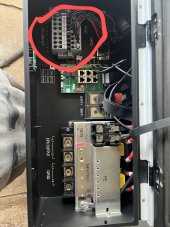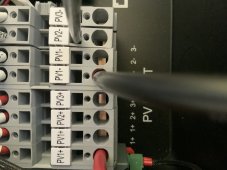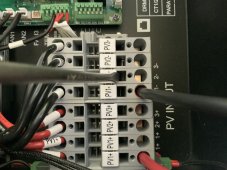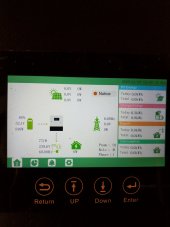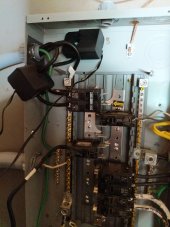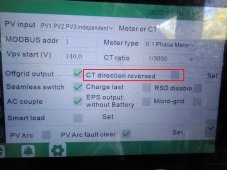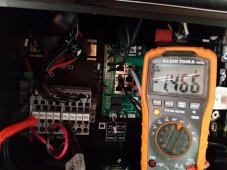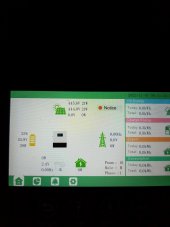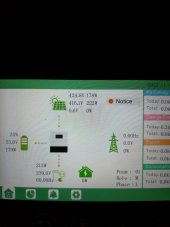You avoid the question about having more power than 50A available when you are AC couple during a power outage..
I just didn't spell it out for you. What I said was
you can couple any amount you want on the output side of the inverter. The inverter just provides the grid signal. You must specify how you are AC coupled when you talk about AC coupling. You can be AC-coupled on the input side of the inverter (grid-tied) and you can be AC-coupled on the output side of the inverter (also grid-tied when the grid is on). You can be AC-coupled on the output side when you are running off grid with an inverter only, or when the generator is also running. Its all AC. This means you can have 50A + 200A AC-coupled as long as you are consuming or discarding all of the energy you are producing. You can discard to the grid if you are grid-tied, or you can discard to your battery if you have batteries to charge, or you can discard to something else. You can have 50A + 2,000,000A as long as you can consume or discard the 2,000,050A.
The point here is that the AC-coupled energy is on the output side of the inverter and therefore has nothing to do with the inverter. The energy does not flow through the inverter. So the terminals won't melt, the relays won't fry, the batteries won't explode. The only thing that will happen if you don't consume or discard the excess energy is that the AC voltage will rise to unacceptable levels on the inverter outputs and your house, and once that happens the AC-coupled PV inverters will turn off completely. They are required by law to disconnect from the AC source immediately when the voltage level becomes abnormal. They will then wait for around 5 minutes before they will start sampling the voltage levels again and then turn on if all is right.
The only time you need frequency shifting is when the grid is off (intentional or not) and you don't have a way to discard all excess energy. Unless you are draining your batteries everyday and you have a gigantic battery bank, a power outage is more likely to occur when your batteries are already fully charged. This means that you won't have any place for excess energy to go when you are over producing. As has already been explained by others, this is a problem if the frequency shifting isn't immediate, or the grid-tie inverters don't respond quickly enough, or the feature simply doesn't work yet in the GSL inverter. We currently have no information about how fast the GSL inverter frequency shifting works. Nor do we have any information about how fast your PV inverters respond to frequency shifts. Nor do we have any information about what the GSL inverter does when abnormally high voltages appear on its outputs.
Assuming we never get any answers for any of those questions, a simple solution is to add a diversion load controller and load. This solution has already been mentioned at least twice. They are designed for this exact condition and respond essentially instantaneously to abnormal rises in voltage. That is their purpose and they are relatively inexpensive. So heat some water and if it gets too hot dump some water, or connect to an infinite load like a swimming pool if you have one, or try to boil the ocean or a stream if you are near one, or get a set of outside resistors, heaters, lights, or turbines, or just get a normally-closed SSR that turns off some of your inverters when they are producing too much energy.
A question that I don't believe has been asked yet is what does the GSL inverter do when it is running on generator power and PV power is AC-coupled to the output side of the inverter? Since their is a 100A relay for the generator does the excess power back feed the generator and burn it up? Does the GSL inverter detect energy other than from the generator and close the generator relay and switch to inverter power from the batteries to keep the PV inverters running? Does it leave the generator running or shut it down? Does the GSL inverter detect abnormal voltage and shut everything down? Does the GSL inverter somehow isolate the generator power from the AC-coupled solar inverters? If so how would they isolate generator energy from AC-coupled PV energy and still be AC-coupled? No matter what the answer is, you will still need a diversion load controller and a load if you want all of the parts to continue running.
Now you see why I didn't spell it out before.



